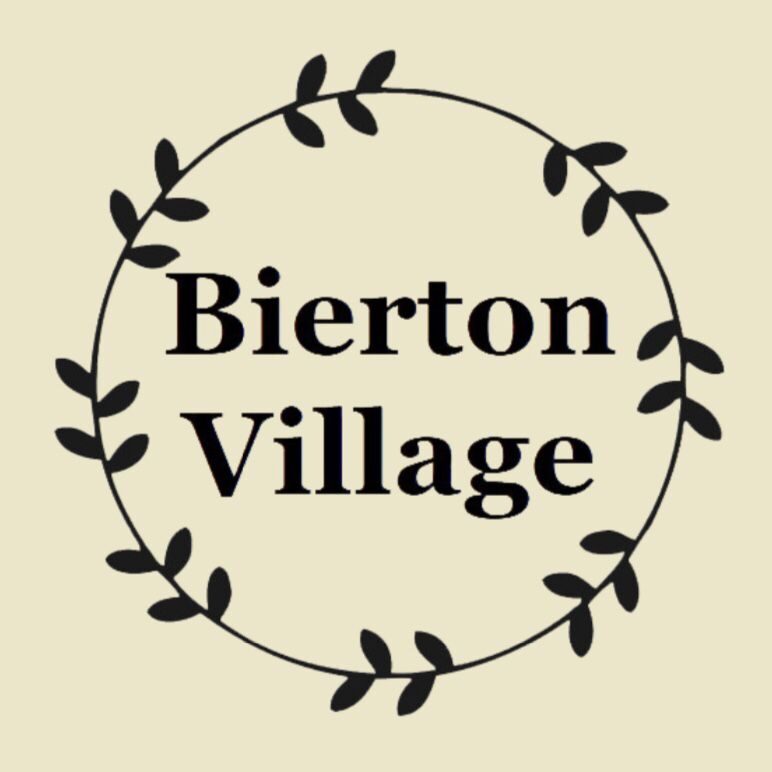Local History
The Civil Parish of Bierton with Broughton is situated to the North East of Aylesbury and covers an area of 990 hectares (3.8 square miles) of Buckinghamshire countryside.
The western edge of the parish runs along the boundary of Aylesbury town.
The urban area has spilled a small amount into the parish at Oldhams Meadow but elsewhere there is a distinct buffer of open country between the villages and the town limits. The village has fought hard to preserve this clear separation.
Today the parish really contains three villages; Bierton, Broughton Crossing and Oldhams Meadow. The Parish boundaries were recently redrawn, leaving Broughton as its own hamlet. also allowing the newly developed Kingsbrook to become a Parish in its own right.
At the north end of Bierton is Burcott, which was once a separate settlement but is now connected with Bierton along the Burcott Lane.
The small settlement at Broughton Crossing grew up around the station on the old North Western Railway. The station has long since closed and very little now remains of the old railway line.
The latest estimate of the population is 2,178 which is based on the 2011 census.
The village of Bierton, also known as Bortone, Berton or Bearton, is built on a low ridge of limestone about 10 metres above the clay of the Aylesbury Vale.
The dry land and reliable water supply (see St.Osyth’s Well) provided a good site for settlement and there is evidence of farming activity well before Roman Times. Remains of a substantial Roman Villa have been found on the site of the present churchyard and school.
St. James’s Church was built in the 14th century and around it grew a substantial village. By the 16th century, Bierton consisted of one, or possibly two, manor houses, the church and numerous farms which spread out along the ridge in the direction of Hulcott. The plan alongside shows how part of the village might have looked at this time. The moat close to St Osyth’s well still exists but the manor house disappeared some time after 1770.
Bierton achieved notoriety in 1773 by staging the last public execution in Buckinghamshire. A Tring chimney sweep called Corbet was hanged in irons on a gibbet put up on the corner of the lane that went from the Hulcott turn towards Tring. The lane is now called Gib Lane.
The Turnpike Road, built in 1810, linked Aylesbury, Bierton, Rowsham and Hockliffe. The extra traffic provided the impetus for the village to grow so that, by the early 20th century Bierton add spread as far as the Rowsham Road and the village had six pubs, one forge, one carpenter’s yard and a substantial brickworks down Brick Kiln Lane. Bierton also had at least one brewery and a shop with a bakery beneath it and a butchers alongside. Burcott was still an isolated settlement. The map is a detail from the Ordnance Survey map of 1880.
The first National School in Bierton was built in 1848 on land behind the church. Prior to that, it is believed that classes were held in a house close to St Osyth’s Well. The school served all three villages until 1855 when the first Hulcott school was opened. Bierton Church of England Combined School moved to its present site in 1963. Until recently, there were three churches in Bierton. The Baptist Chapel was built in 1831. Shortly after this, in 1835, a Methodist School and Chapel was opened on the corner of Burcott Lane. The Methodists moved into a new church in 1877, the building of which still exists. It was taken over by the Elim Pentecostal Church in the late 1970s and was finally closed as a place of worship in 1994. The Baptist Chapel has closed only recently.
The above is a very brief description of Bierton’s history. Much more information can be found in the following books:
- The Story of Bierton – Mike Griffin & Robin Thurston, 1994
- A Young Persons Guide to the History of Bierton, Broughton and Hulcott – Honor Lewington, 2000
- A Bierton Book of Names – Fred Hinxman, 1998
Copies of these books and other documents can be found in the Centre for Buckinghamshire Studies at the Aylesbury Reference Library.

0 Comments